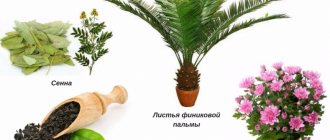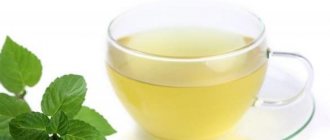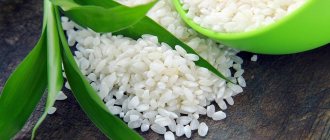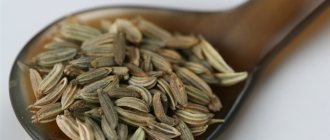For thousands of years, in the Chinese province of Yunnan, the recipe for a unique drink, pu-erh, has been passed down from generation to generation, helping to maintain slimness, gain health and longevity.
Today about how to use pu-erh for weight loss
, the portal will tell you about weight loss “Lose weight without problems.” And our regular readers have already had the opportunity to read on the pages of the site about what kind of tea there is for weight loss.
What is puer
Pu-erh is tea that has undergone a special fermentation procedure (with the help of microorganisms). It is also called post-fermented tea. It is this type that the Chinese call black tea, while the black tea familiar to the whole world is actually red.
As for pu-erh, when making it, the leaves are first processed in the same way as for the production of green tea, but the process does not end there. The prepared tea leaf, a kind of semi-finished product, is subjected to fermentation, which can occur either naturally and last for years, or artificially - using special technologies.
The difference in the fermentation method determines the type of pu-erh received: the tea that has been aged naturally is called shen-pu-erh, and with an artificially accelerated process, shu-pu-erh is obtained.
Calorie content of the drink
If we talk about the calorie content of the tea itself, it averages 150 kcal per 100 grams. It is also worth clarifying that 100 grams of pu-erh contains approximately 20 g of protein, 7 g of carbohydrates and 5 g of fat.
The drink itself is significantly less calorie. One cup of pu-erh without adding any other ingredients contains only 2 calories.
The difference between Atomi tea
Production - small piles of collected leaves are moistened with hot water at specified intervals. After drying is completed, they are laid out in the thinnest layer. They lie in this position for about 2 months, fermenting.
Natural drying technology allows you to preserve all the favorable elements. The complete process of creating Atomi tea lasts up to 8 years. Aging affects the taste, smell, composition. The color becomes dark. Experts call this Puer-Shen. See above.
The main difference is the amount of gallic acid. The concentration in the extract is 35 mg per gram. Standard - 1 mg per 0.7 g.
Is it true that pu-erh helps you lose weight?
The special method of making pu-erh determines the high content of various elements that actively affect the body. Thus, pu-erh has many beneficial properties, and some of them are actually beneficial for people who want to lose weight.
Benefits of pu-erh for weight loss
Regular consumption of pu-erh can speed up the process of losing weight, since this tea has the following properties:
- Removes toxins from the body. Cleansing the body helps improve the performance of all organs, and nutrients will be broken down faster and better absorbed.
- Has laxative and diuretic effects. There is no need to worry about diarrhea or a constant urge to urinate, but you will be able to get rid of excess fluid and improve bowel function.
- Speeds up metabolism. Fat deposits will be converted into energy faster, and even with a low-calorie diet, the body will be in good shape.
- Reduces blood glucose levels. This reduces appetite, therefore, you can get rid of the constant feeling of hunger.
In addition, pu-erh improves the functioning of the cardiovascular system, which helps improve physical endurance and exercise more effectively.
Contraindications for taking the drink
Like any tea, pu-erh should not be drunk if you have an individual intolerance. In addition, contraindications are:
- urolithiasis disease;
- blood pressure problems;
- chronic gastrointestinal diseases;
- elevated body temperature.
In addition, tea should not be drunk on an empty stomach, even for healthy people, as it stimulates increased production of gastric juice, and this, in turn, can lead to cramps, pain and heartburn.
Contraindications
- Consuming on an empty stomach increases the production of gastric juice, which can cause heartburn.
- Oncological diseases.
- Sudden jumps in blood pressure, high body temperature.
- Hypertension, atherosclerosis.
- Stones in the kidneys or gall bladder.
- Diseases of the stomach, duodenum, ulcers, ulcerative colitis.
- Pregnancy, breastfeeding. Consumption is permissible, but only in moderation and after consultation with a doctor. The daily dose is only 2 cups of lightly brewed tea.
- Individual intolerance and sensitivity to caffeine.
To maintain a beautiful and slim body, you need to make an effort. Pu-erh will help to simplify this task a little, which, in addition to weight loss, will give a surge of strength and vitality.
The article has been verified by the editors
What type of pu-erh should you choose to include in your diet?
As already mentioned, there are two types of pu-erh - Shen (fresh, green) and Shu (ready-made, black). They differ from each other in many ways, and although some experts believe that the choice of a specific tea for a diet depends only on taste preferences, in fact it is worth taking a closer look.
Shu-puer
Shu-puer black tea has a more alkaline chemical composition, which normalizes digestion and accelerates the breakdown of fats.
It is recommended to consume it in the morning and evening, since before breakfast, pu-erh will “wake up” the stomach, and after dinner it will help you digest food faster in order to calmly prepare for bed.
Shen puer
Green tea Shen Puer acts somewhat faster than the “quick ripening” Shu Puer. It should be drunk during the day, for example, after lunch, when the body is fully active.
It is also worth saying that very young Shen is not recommended to drink on an empty stomach, since the content of active substances in it is too high and can cause nausea.
The video material was filmed at a tea exhibition, where we will taste Shen Puer tea, which is very useful for weight loss.
How to store
Unlike other Chinese products, shen does not require sealed, vacuum packaging. On the contrary, it needs fresh air for fermentation and opening. It is no coincidence that it is called “living”, breathing. At the same time, sufficient humidity (45-60%) must be maintained. Excessively dry conditions, as well as too much moisture, will ruin the brew.
Room temperature is fine for storage. It is important to isolate the leaves from foreign odors (such as spices), as well as dust and bright light. The ideal place to put the purchased “pancakes” would be a wooden box, a closet or even a bookshelf.
Features of brewing the drink
To brew high-quality pu-erh, you should take soft, clean water and glass or porcelain containers. The water temperature for brewing Shen and Shu pu-erh is different: in the first case it is 80 degrees, in the second – up to 95.
For 150 ml of water you need 3-4 g of tea. Pu-erh needs to be poured into a container, filled with water and drained after 10-15 seconds. This brew is not tea; it is customary to “wash” and “awaken” pu-erh in this way.
The second brew is kept for 1 to 3 minutes, after which the tea can be drunk. It is worth noting that pu-erh can withstand up to 5 brewings without losing its taste and healing properties.
How to drink pu-erh tea to lose weight
First of all, pu-erh is drunk warm, not hot.
It is important that this tea is recommended to be consumed only after meals or immediately before meals, as otherwise it may negatively affect the stomach.
In addition, there are two methods of consuming pu-erh for weight loss. In the first case, a cup of tea (200 ml) is drunk about half an hour before meals to reduce appetite. Half an hour after eating, drink another half cup of pu-erh, thereby ending the meal and stimulating digestion.
In the second case, tea is drunk instead of food, for example, instead of dinner, since breakfast and lunch cannot be skipped. However, with this option, you should drink it at least 2 hours before bedtime so as not to cause insomnia.
Daily norm
To achieve results, you should drink up to 3 cups of pu-erh per day, otherwise post-fermented tea may cause unwanted side effects.
Is it possible to add milk, sugar, honey?
Of course, in order to lose weight, you should not add sugar to pu-erh. The same applies to honey, as it reduces the beneficial properties of tea. Sometimes milk can be added to the drink. For this you will need:
- 8 g shu puer;
- 0.5 liters of milk (fat content 1-2.5%).
The tea is poured with hot milk and infused for 15-20 minutes.
How to choose
When choosing products, it is important to pay attention to the date of manufacture. The month of production should be spring or summer, and the year will tell you about the age of the product, and, consequently, about the taste and aromatic properties.
The structure of a high-quality cake is always dense, elastic and homogeneous: without cuttings, dust, or damage. Even when dry, the brew smells pleasant and thick, without any extraneous, strange aromas.
The finished infusion should be translucent, not cloudy, without sediment, dust or crumbs. It tastes slightly astringent, with a slight bitterness and astringency, but drinks easily and softly.
Remember that the price of tea is directly proportional to its quality. Pu-erh is an expensive product, and its cheap analogues are most likely fakes. You can get acquainted with the price category of this variety in the catalog of the Russian Tea Company. Place an order on our website and do not doubt the reliability of your purchase. We supply raw materials of both premium and highest, first or second grade from certified plantations in Yunnan.
Reviews from experts
Nutritionists confirm the drink’s ability to influence the process of losing weight, but warn that its effectiveness is exaggerated.
Nadezhda Vorontsova, nutritionist, St. Petersburg: Many people believe that pu-erh can burn fat. In fact, it has the same effect as that observed when drinking regular black or green tea - it invigorates and tones. Pu-erh can only be called an auxiliary remedy, since you fill your stomach with tea. Perhaps it will help you switch from cravings to other foods or increase endurance during sports, but all these are just additional properties that will not help in any way if you do not take weight loss seriously.
Beneficial features
Strengthens metabolism.
Has a beneficial effect on the gastrointestinal tract. Prevention of cholesterol plaques by thinning the blood.
Often used for weight loss.
Helps with migraines and constipation.
Antispasmodic effect. Increases tone. More powerful than synthetic energy drinks. Fights free radicals, rejuvenating the dermis.
Strengthens memory, focus, attention.
Improves brain activity, dilates blood vessels, accelerates the transport of oxygen through the cells of the body and increases tone.
It has a positive effect on all life systems and functions.
Reviews of those losing weight
For informational purposes, here are a few reviews left by visitors to our site through the comment form.
Review from Natalya: I’m losing weight, and my friends recommended Pu-erh tea to me. It is useful in that it removes various toxins and excess fluid from the body, and thereby helps to reduce weight. I can say that it really invigorates well, and therefore you shouldn’t drink it in the evenings, otherwise you won’t fall asleep.
This tea certainly has a strange taste, I don't think everyone will like it. Tart, slightly bitter, smells of something incomprehensible, seaweed or something. Plus I drink it without sugar. I don’t know if it helps you lose weight, as everyone says about it. Of course, you need to eat right and exercise, then you will see results.
Review from Anna: On the Internet I came across a description of a miracle tea with an interesting name - Pu-erh, which promotes weight loss. I bought it to try. It is important that when brewing it, you need to fill it with boiling water and drain the first water in order to wash away this terrible smell of earth and dampness from it. Imagine my surprise when I received amazing black tea! Very tasty, aromatic, and I actually lost a couple of pounds in a month.
It only gets more expensive over the years
A couple of years ago, the Russian rap group Basta and Guf performed several songs about Chinese tea, after which its popularity among Russian rap fans increased noticeably. Even those who previously preferred beer, wine and coffee began to drink Pu-erh, Tieguanyin and Dahunpao. These three varieties of Chinese tea have long found their connoisseurs in a country where they once traditionally drank tea that was completely different in quality and mood. The leader in the imported trinity was pu-erh tea, which stands at the origins of the world tea culture.
Pu-erh is perhaps the most complex of all Chinese teas. A lot of books have been written about him in the Middle Kingdom. In Russia, despite constantly growing sales volumes, it is more shrouded in myths and legends. To unravel the secret of success and understand the depth of this ancient drink, let's go to its homeland, Yunnan province.
According to production technology, pu-erh is classified as black tea. It is produced in the only place on earth where the most optimal conditions for cultivation and production exist. Climate, soil composition and altitude play a very important role. The oldest tea trees on the planet, which are 400-1500 years old, are preserved in the Chinese province of Yunnan. Only professionals know that a tea bush is cultivated tea, and trees have survived to this day only in the wild. In the foothills of the Himalayas at an altitude of 1500-2000 m above sea level, in the mountains of Xishuangbanna Dai Autonomous Prefecture, at the junction of China, Burma and Laos, there are the world's largest growing areas of wild tea.
Leaf for the production of pu-erh is collected both from low tea bushes and from huge trees, the height of which reaches 3-5 meters. It is believed that the older the tree, the more valuable its foliage and the tastier and healthier the tea produced from it. These trees are not treated with pesticides; it is from them that the highest quality raw materials are collected. The oldest tea tree is over 3,200 years old, but tea is no longer made from it.
Tea leaves are collected en masse from medium and low bushes, the finished product is inexpensive, and the taste of such tea is the most common. The same cannot be said about tea from old trees, the price for which this spring ranged from a thousand to 30 thousand yuan per kilogram.
Depending on the production technology, pu-erhs are divided into light “sheng” and dark “shu”. The technology for producing pu-erh “shu” was developed more than 30 years ago, in the 70s of the last century.
Unlike other teas, pu-erh teas acquire new properties every year, becoming tastier and more aromatic. Nowadays, it is even fashionable to buy and collect pu-erh tea, because tea is a good investment.
The Chinese, unlike the Russians, prefer light pu-erh, explaining this by its more natural taste. Over time, the fermentation process in this type of tea continues, the color of the tea leaves darkens, and its taste acquires new notes. Dark pu-erhs are more popular in Russia. They are somewhat reminiscent of black tea in color and taste.
Today, in China and beyond, the demand for aged pu-erh far exceeds supply. Some businessmen abuse this situation and sometimes attribute an absolutely incredible age to tea. It should be remembered that these days 35-40-year-old pu-erhs and older are practically not found either in retail or, especially, in wholesale sales, even in China itself. Of course, they exist, and they are incredibly expensive, but rarely does anyone want to part with such a treasure. Directors of tea factories advise not to collect tea, but to drink tea. After all, improper storage conditions can completely ruin its taste, and high humidity can cause mold. In pu-erh, the quality of the raw material is more important than its age. Because cheap tea stored for 10-30 years will not get better, because it was originally made from low-quality raw materials.
You can get acquainted with tea innovations these days at numerous tea exhibitions held in many major cities of China, and to better understand the philosophy of pu-erh, you should go to the Royal Tea Festival, which is held annually in April in Menghai County (Xishuangbanna Dai Autonomous Prefecture, Yunnan Province).
In Menghai, tea was first cultivated in the world. The Bulans, one of the ethnic groups inhabiting Yunnan, were the first to grow and produce tea. The locals are very proud of their tea and the fact that they live in such a historical place with a wonderful climate.
Ms. Liu Yingmei, head of the Menghai County Propaganda Department, noted that the Menghai Tea Festival gives great impetus to the development of tea culture and industry. Tea production enterprises have the opportunity to demonstrate their best practices. This year, an exhibition-fair was held as part of the festival. More than 80 tea factories and factories presented their products. Menghai produces 60% of the province's pu-erh.
This year, as part of the festival, a competition for the production and packaging of pu-erh was held for the first time. According to the main organizer of the event, Cheng Shenhua, the competition introduced an element of entertainment and became a kind of Olympics of manufacturers. For farmers and factories, this was a great opportunity to demonstrate advantages, compare skill levels, and exchange experiences.
On the first day there were competitions in tea leaf picking and primary processing. Eight people took part in them. An experienced jury watched the progress of the tea “competitions”. Each stage had certain requirements.
On the second day of the festival, a pressed tea packaging competition was held. Workers from 10 large and small enterprises took part in them, including the giants Menghai Tea Factory), etc.
Participants had to pack 42 Pu-erh pancakes weighing 357 g as quickly and efficiently as possible - first in wrapping paper, then in bamboo leaves of 7 pieces. The jury took into account not only speed and accuracy, but also creativity. The third stage of the competition was the pressing of loose tea into a “pancake” shape using the traditional method.
Thus, within two days it was possible to get acquainted in detail with all stages of pu-erh production, with the exception of the process of artificial aging of tea raw materials (accelerated fermentation), because it takes 30 to 50 days and requires complete sterility.
According to the results of the competition, tea grower Wen Teliu received the honorary title of “Tea King”; his skill was recognized as the best in the county. Among the enterprises, it became the best.
Horse in exchange for tea
Pu-erh also differs from other types of tea in that it goes through a pressing process. For what purpose was tea pressed? This is done only for ease of transportation. After all, along the “tea route”, valuable goods were sent to Tibet, then to India and Nepal.
In ancient times there were no cars, trains or planes. Transporting tea from Yunnan province was quite difficult. The only method of transportation was caravans. One of the starting points of the “tea route” was the Yiwu Mountains (Xishuangbanna District). From there, caravans loaded with pressed tea went to Tibet, where local residents bought the goods. From Tibet, tea was resold to India and then to Nepal. Tea reached other parts of China through Sichuan Province.
Tea production and consumption began to spread in China after the first Emperor of the Celestial Empire, Qin Shi Huang, in 221 BC. united China. For centuries, tea remained the drink of emperors and the upper class.
During the reign of the Qing dynasty, once a year tea was specially delivered to Beijing, to the court of the emperor. 3333 kg of tea were sent annually from Yunnan to the capital. During the Qing era (1644-1911), the following expression became widespread in China: “In summer, the emperor drinks longqing tea, and in winter, pu-erh.”
A standard pu-erh pancake always and invariably weighs 357 grams. There is a logical explanation for this. In ancient times, tea was transported on horses. To reduce the volume of fluffy tea leaves, they began to press them. Bales of tea were loaded onto the horse from both sides for balance. The mountain paths at that time were no more than three meters wide; two horses with a load had to pass on them. Each carried a load of 60 kg, 30 on both sides. “Pancakes”, or disks, were traditionally packaged in 12 bundles of 7 pieces, for a total of 84. Divide 30 kg by 84 and get exactly 0.357 kg. The seven disks weighed exactly 2.5 kg.
Pu'er tea occupies a huge place in Chinese history. Once upon a time it was traded for horses, it was the main cause of the “opium wars”, and was considered the drink of the elite. Centuries later, pu-erh became available to everyone without losing its special treatment. Nowadays, pu-erh is a manifestation of good taste and a symbol of hospitality.
The Great Tea Route, which ran in the 16th-19th centuries. from Asia to Europe, in terms of trade turnover was considered second after the Great Silk Road. Nowadays, express mail demonstrates the wonders of delivery, and tea from the “Chinese hinterland”, Yunnan province, is drunk today in various parts of the world.
In pu-erh, the quality of the raw material is more important than its age. Because cheap tea stored for 10-30 years will not get better, because it was originally made from low-quality raw materials.











